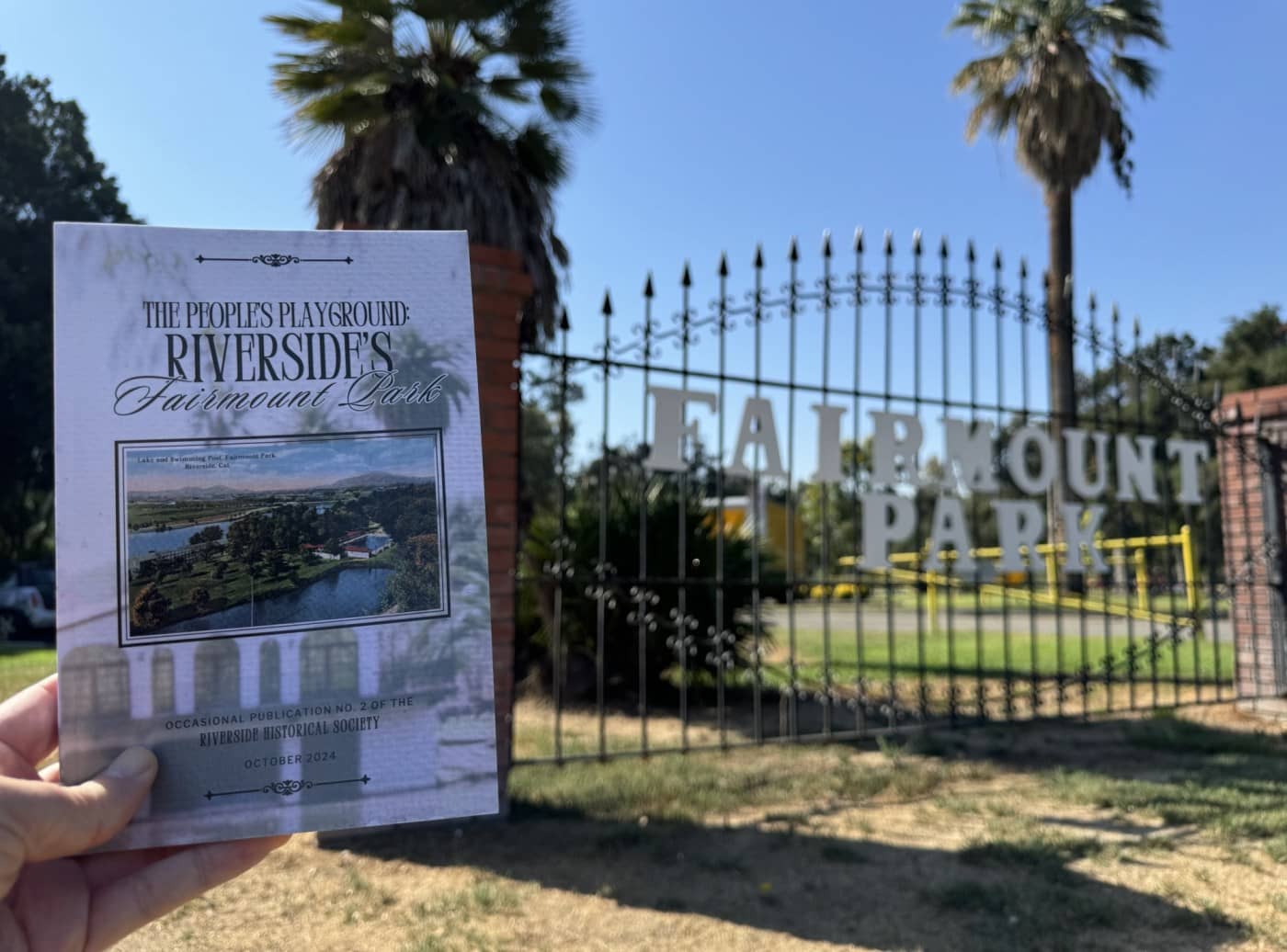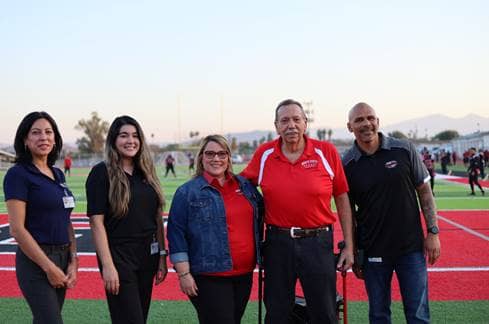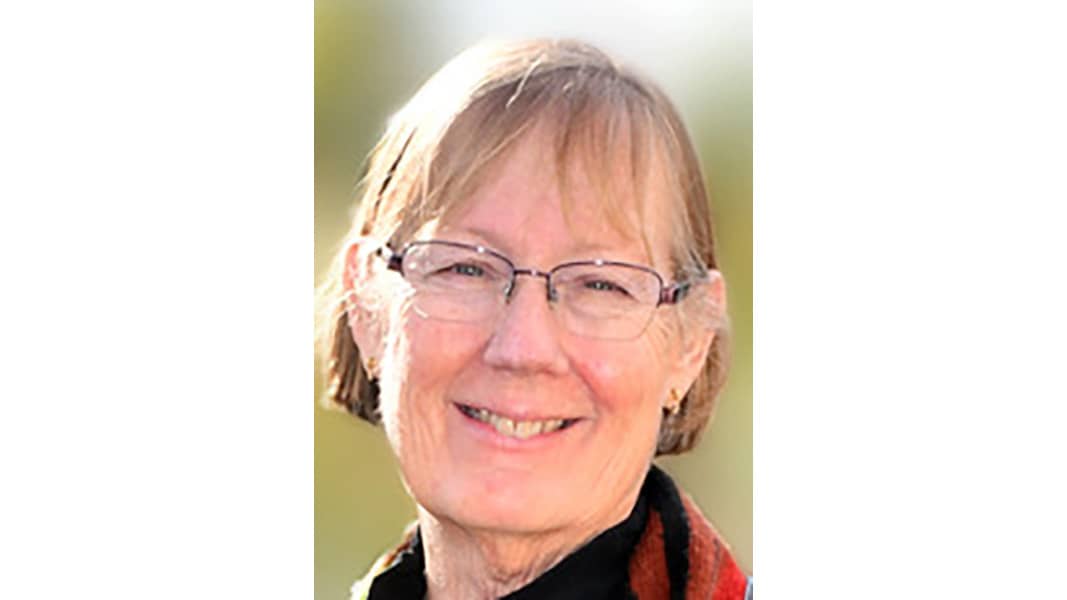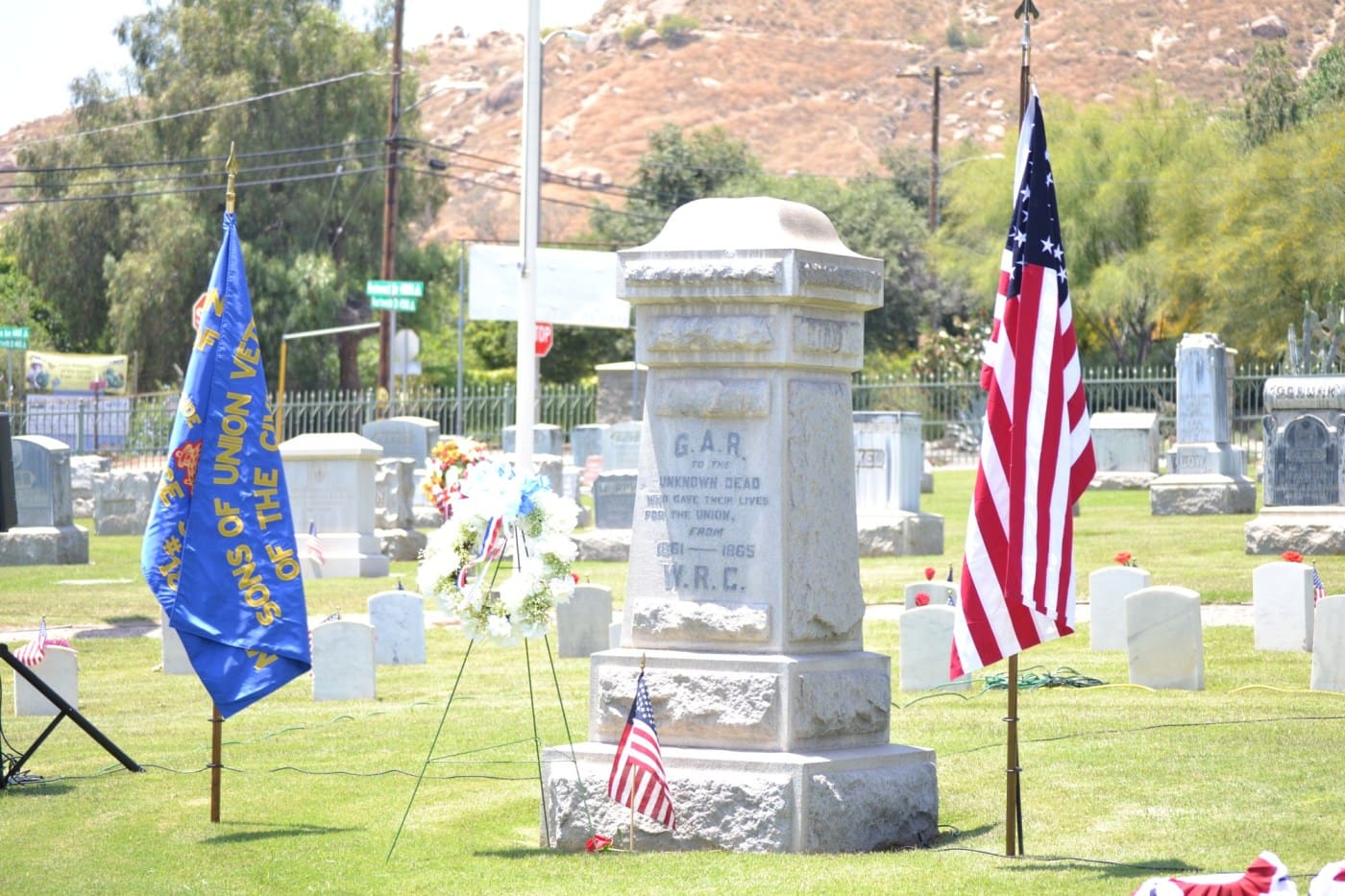Riverside’s Fairmount Park dates to the early 20th century, when the Olmsted brothers, the landscape architects whose father had designed New York City’s Central Park, were hired to design a gracious park for the young city.
With more than 110 years behind it, Fairmount has a lot of history to unpack. Along comes a book to do just that: “The People’s Playground: Riverside’s Fairmount Park,” published by the Riverside Historical Society.
Seventeen writers contributed 30 articles on different aspects of the park.
“If one person did it, it would take a lot longer. By dividing it up, each person could research their section,” Glenn Wenzel, the editor, tells me.
(I should start outsourcing my columns. It might be simpler to make deadline.)
Among the topics covered: the bandshell (built in 1920, lost to a fire in 1992 and rebuilt), the playground, the rose garden, the carousel, the golf course, lawn bowling, the sulfur springs, boating and sailing, Lake Evans and the Plunge — including the years in which its use was segregated.
The amphibious tank called the Water Buffalo (manufactured in Riverside) and Union Pacific engine No. 6051, two features visible from Market Street since mid-century, are in the book as well.
Were this “The Tonight Show” of the proper vintage, right about now Ed McMahon would be tapping the book’s cover and making the bold assertion that everything you ever wanted to know about Fairmount Park is in this book.
Is it? Probably not, even at 266 pages.
“We tried to cover everything,” Wenzel says. As his foreword puts it, actually covering everything is impossible. (If you’re looking for coverage of, say, your family reunion barbecue in 1992, you might want to adjust your expectations.)
“The People’s Playground” will make its debut at Sunday’s Local History Book Fair, at which copies of the $25 book will be sold, that day only, for $20. The more copies you buy, the more you save!
The book fair takes place from 11 a.m. to 1 p.m. in the lower level of the Riverside Medical Clinic, 7117 Brockton Ave. There aren’t enough devotees of local history to fill the Riverside Convention Center, sorry.
Closing the event at 1 p.m., historian Vince Moses will give a talk offering an overview of Fairmount Park. With his words still buzzing in your ears, you can then depart with your copy of “The People’s Playground” and read it on a bench at Fairmount Park.
But the book fair will have much more. Hawking their books will be 12 local writers of nonfiction, including names you may know or remember from the newspaper: Steve Lech, Dan Bernstein and Donna Kennedy. Also, yours truly.
My latest collection of columns, “Waving at Strangers,” covering 2006 to 2010, will debut in Riverside. How about that!
As a side note, if you’d like to host me for a reading and talk, drop me a line. After I get a few appearances lined up, I’ll tell you here about my book and include dates, times and places where you can see me.
A bunch of other new books about the past will also launch at the book fair.
Not one but two collections of this newspaper’s Back in the Day history columns, by Steve Lech and Kim Jarrell Johnson, each book covering two years, will be available. (They fell one book behind due to the pandemic and are catching up.)
Lech will also have “Riverside’s Street Names.” In it, he delves into the meaning behind the names of more than 200 major and minor streets around the city. Perhaps, at long last, we will learn why it’s called Mission Inn Avenue! Just kidding, Steve.
Larry Burns will have “100 Things to Do in Riverside Before You Die,” in a newly updated second edition. I’ve read it and learned from it and lived to tell the tale.
Kelli Shapiro will have her “Inland Empire and San Gabriel Valley Movie Theatres” book, with capsule histories of theaters, many of them long gone, in both regions. It’s an impressive feat of research.
Candidly, I’d had thoughts of interviewing each of them about their books, but that hasn’t happened in the intervening months and at this point, with potential column topics piling up, probably won’t. This plug may have to suffice.
Related Articles
Stuffed lions and donkeys, favorite sports and last coffees, oh my!
Fact and fiction collide in Rachel Stark’s novel ‘Perris, California’
Perris Library, named for Cesar Chavez, closes for $1.2M renovation
Repairs to Riverside’s De Anza statue to be explored
Bowling’s 1950s boom in suburbs gets fresh spin in new book
Glenn Wenzel will have “Riverside and the Salt Lake Route,” which will be of particular interest to train buffs. The turn-of-the-century route was later absorbed by the Union Pacific, but a surprising number of physical reminders in Riverside survive.
A packing house is now an Old Spaghetti Factory. The depot is now El Patron restaurant. Pergolas along Mission Inn Avenue once led from the depot to the Mission Inn. The Santa Ana River railroad bridge was, at 900 feet long, the longest concrete bridge in the world at that time and is still impressive today.
Also, there’s engine No. 6051, the one that’s at Fairmount Park.
Having circled back to the beginning, let’s end here. But if you can make it out Sunday to the book fair, please do so. It’d be nice to see you, and to be seen.
David Allen is visible Friday, Sunday and Wednesday. Email dallen@scng.com, phone 909-483-9339, like davidallencolumnist on Facebook and follow @davidallen909 on X.



